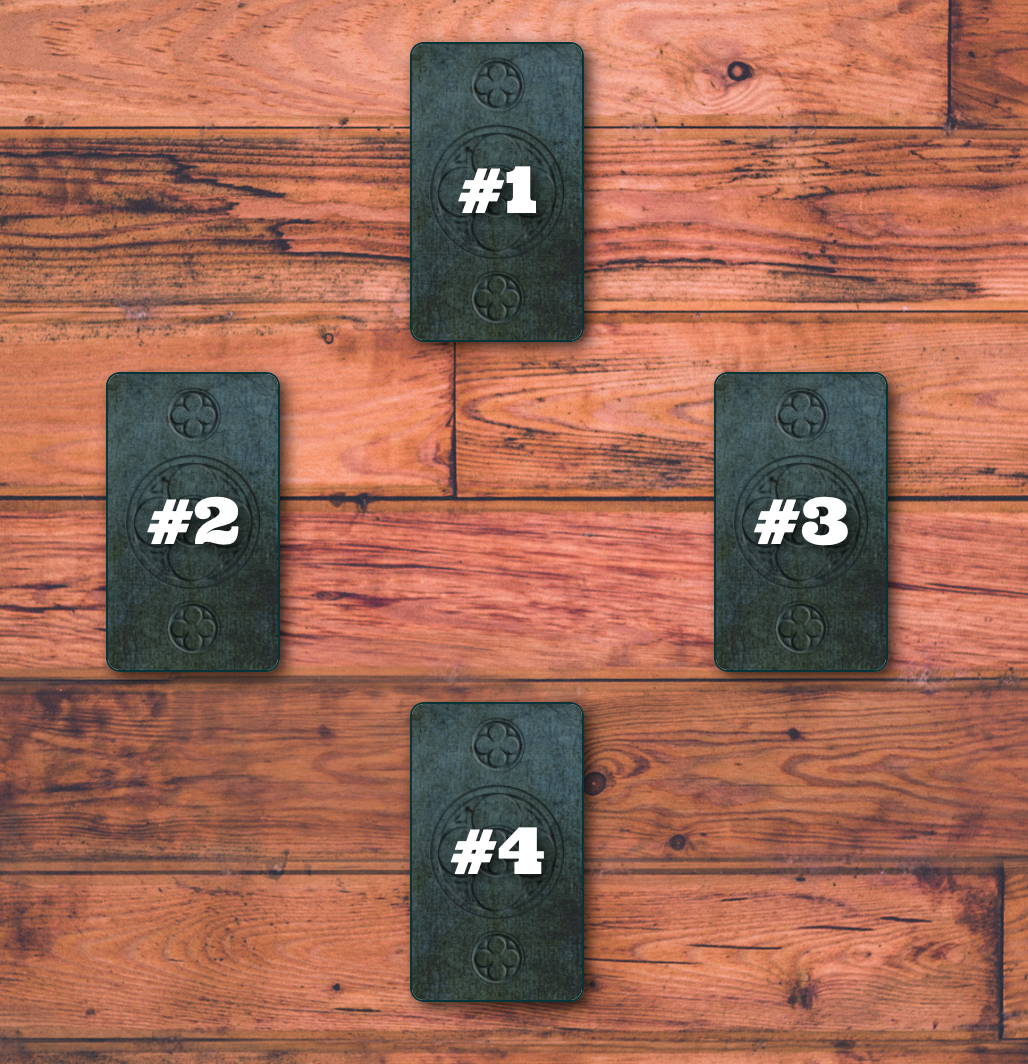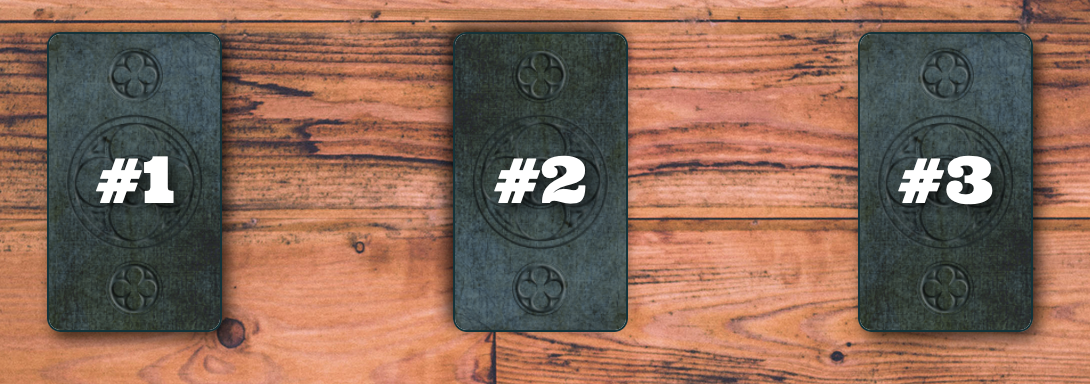My Favorite Refactor: A Look Back at Growth
When I first started learning programming, I made a command line app that does tarot readings. (You can play with that app here.) As a first project, it’s really lovely! It works and has no bugs. The logic is very linear and doesn’t take advantage of any principles of OOP – except for saving values in instance variables… all over the place. It was a little unruly in that regard. And it was this version of past me that needed to turn that command line app into a Rails app. I was totally overwhelmed.
My First Foray from Command Line into Rails
Before that command line app became the web app it is today, I had to picture how it would look on the screen. My goal with the app was to have a web page with 3 random cards on it, each card position having its own meaning. I called that a spread and it looks something like this:
Position 1 Position 2 Position 3
Me The Other Person The Relationship
_________ _________ ___________
| | | | | |
| The | | 3 of | | Ace of |
| Chariot | | Wands | | Pentacles |
| | | | | |
|_________| |_________| |___________|
"self-control, "entrepreneur, "material strength,
willpower, leadership, prosperity,
ambition, focus" visionary" practicality"
So I made a SpreadController controller. I wasn’t really sure what a controller did exactly, but I knew it made pages. I also knew I wanted my app to have 3 different types of spreads, so I made 3 different spread methods and I called them: spread1, spread2, and spread3.
class SpreadController < ApplicationController
def spread1
...
end #spread1
def spread2
...
end #spread2
def spread3
...
end #spread3
end
I knew that to make a “reading,” I’d need a spread of cards – meaning a page that had spaces for cards, and the cards to go in them. I was already confusing myself with the naming of objects. So I did what I knew:
class SpreadController < ApplicationController
def spread1
# I grabbed all of the cards from the magical database
# and stored them in an instance variable.
@cards = Card.all
# I hoisted a reading array to hold the cards I'd be using
# in the view.
@reading = []
# I grabbed 3 random cards from the @cards variable,
@cards.sample(3).each do |card|
# and pushed them into the reading array.
@reading.push(card)
end
end
end
I did this exact same thing for 4 cards in spread2 and 8 cards in spread3. It worked and there were no bugs! In fact, it felt like I used all of my Ruby knowledge at once in these controller actions. This was my final project in my class and I got to share it with my classmates. I was proud of this accomplishment. Hooray for total n00b me!
The First Refactor
About a year later, I came back to the project to see if there was anything to refactor. I decided this controller could use some work. I had a much better understanding of how controllers work and how the router and controller work together. I wanted pretty urls like /readings/relationship. So I renamed my controller to ReadingsController and renamed my methods as well. I also condensed all of that hoisting, eaching, and pushing into 1 line for each method.
class ReadingsController < ApplicationController
def relationship
@cards = Card.all.sample(3)
end
def confidence
@cards = Card.all.sample(4)
end
def conflict
@cards = Card.all.sample(8)
end
def index
end
end
That felt like a really tidy refactor! My controller was much skinnier and the methods made more sense to read.
Unfortunately, my views were all still hard-coded HTML with matching Bootstrap modal and jQuery for each card on the page. And I was extracting data from the @cards array using the index number to insert it into custom text about the reading. So card 1’s name was @cards[0].name, and card 2’s name was @cards[1].name, etc. The result was really cool because I could control exactly where each card appeared on the screen (within the limitations of the Twitter Bootstrap row & column system).

But the HTML was a nightmare and this approach just was not scalable. Building an 8-card reading was a lot of work, I’ll tell you!
<!-- Multiply this code by as many cards as there are on a page.
That's a lot of hard-coded HTML. -->
<!-- Truncated Sample of Card 1 HTML -->
<h4>You</h4>
<a href="#card1Modal" role="button" data-toggle="modal">
<div id="firstcard">
<%= image_tag @cards[0].imagefile %>
</div>
</a>
<div class="modal fade" id="card1Modal" tabindex="-1" role="dialog" aria-labelledby="myModalLabel" aria-hidden="true">
<!-- SO MUCH Bootstrap HTML goes here... -->
<h4>The <%= @cards[0].name %> Card Represents:</h4>
<%= image_tag @cards[0].imagefile %>
<h3>Your Role in This Relationship</h3>
<p>According to the <%= @cards[0].name %> card, you are currently manifesting qualities like <%= @cards[0].meaning.downcase %> in this relationship.</p>
</div>
<!-- Card 1 Javascript -->
<script type="text/javascript">
jQuery(document).ready(function(){
$("#firstcard").on("click", function() {
$('.firstcard-hidden').css("display", "block");
});
});
</script>
I was storing data about the readings in the HTML instead of the database, but that was a problem for another day and another level of understanding. It worked and there were no bugs! Hooray!
The Major Refactor
About a year later, it was time to face that problem. I needed to make this app scalable. I wanted to be able to make a bunch of new readings on a whim AND I wanted those readings each to have as many cards as necessary in them. Remembering the labor involved in my previous 8-card reading, I wanted a 10-card reading to require as little code as a 1-card reading, and I wanted an admin section in which to build these readings.
The current setup was no longer sustainable. It was time to restructure. I needed more models. I needed more object concepts. My schema grew from just a cards table to one that included:
cards
- name
- keywords
- image_file
readings
- name
- description
- image_file
reading_positions
- reading_id
- theme
- meaning
And now my ReadingsController finally became RESTful with proper show and index actions instead of custom actions.
class ReadingsController < ApplicationController
...
def show
positions = @reading.positions.to_a
cards = Card.all.sample(positions.count)
@positioned_cards = positions.zip(cards)
end
def index
@readings = Reading.all
end
private
...
end
That is a much skinnier controller than where I started. More importantly, it was following the principles of RESTful routing and OOP, and the conventions of Rails controllers. It also enabled me to handle my HTML and jQuery iteratively from inside an each loop.
<% @positioned_cards.each do |position, card| %>
<%= render 'positioned_card', position: position, card: card %>
<% end %>
In the process, I lost my fancy card placement on the screen – now all cards are being output in a row – but that was something I was willing to sacrifice in order to scale the readings.

And it will keep on changing…
I have to be honest. Though this refactor happened months ago, as I was writing this post, I just moved all of my positioned_card code into the partial you see mentioned above. It had been living on the show page, directly inside the each loop.
Which brings me to my point that this codebase will keep changing as the scope of the project changes and as my skillset changes. And I think that’s pretty neat.
In this look back, it’s been interesting for me to see what I understood at any given time and then how I used all of the knowledge accessible to me to build the best thing I could. Learning software engineering can feel daunting! There is an infinite amount of things to learn and directions to go – plus a lot of conflicting opinions about which direction is the best direction to go. It is easy to feel like I’ll never “get there.” It is good to take a moment to reflect on how much I’ve grown in the past couple of years and it is so exciting to imagine how much more I’ll be able to accomplish in the future.